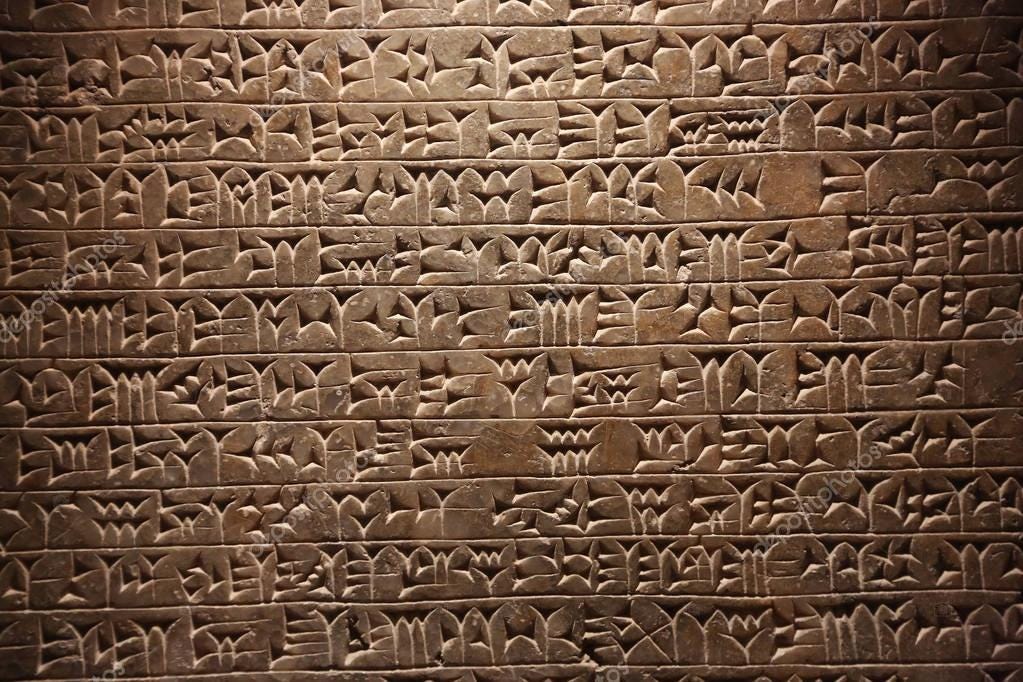On the Value of What Is Real
The oldest preserved writing system in the world is cuneiform, for which we have examples dating back 5,000 years. That is possible because it is written in stone. That idiom dates back just as long and is commonly understood to mean something is “permanent and unchangeable.” Myriad connotations follow but the fundamental idea is that something is set down and can’t be altered and that this trait makes it reliable.
We no longer live in a stone age but rather an information age. As such the primary importance of the reliability of information has become a common and necessary topic of discussion. The truth of information has always mattered, but the ability to weave an entirely false reality through the manipulation of information has never been so strong. At greatest risk today are factors of permanence and unchangeability, owing to the storage of information in virtual, digital formats (like this one!) rather than in physical, material objects. While not quite baked stones that will last five thousand years a book, newspaper, film, or vinyl disc were reliable information storage mediums in recent centuries in great part because they were pressed and completed and did not change. The possibility that a physical object would change on its own was not something that even required consideration until the end of the 20th century. It could be destroyed or corrupted but never altered deliberately and as such it was inherently reliable. It’s physical existence gave it a degree of permanence – each instance of “sharing” of the information required the production of a new object and each of those objects could potentially be preserved or stored in safekeeping. Many books, newspapers, and films will survive for centuries and have already done so.
This is no longer true. The paragraph you just read lives at a digital address where you can revisit it in the future, but even five minutes after you last viewed it there could potentially be alterations to the text. Maybe a typo was fixed, or a long sentence was nipped, or an unclear concept clarified. Maybe factual data was changed – years altered, names adjusted, themes inverted – images swapped – you have little means to know for sure. (You can save archives locally to your device via screenshots, image downloading, print-to-pdf, etc, and should do so often). This has reduced the value of digital information because it has reduced its reliability, and the cost to maintain digital services additionally reduces the value of their permanence. Many websites have faded into broken links missing images and unreliable hosting after just a few years, and archives are incomplete. The digital information we primarily interact with today is impermanent and unreliable by nature.
That is a new era problem but it exacerbates an even older and more fundamental problem – that of the content itself. Who is to say that the information in a book, newspaper, or website is true at all? Would people do that – just go out and tell lies in public? They always have and with the easy cover of digital alterations it is becoming even more common. A brazen lie can be published today and by the time the truth exposes it the original source can be edited, erasing the evidence that the lie was ever published in the first place. I’ve seen it happen and so you have you, aware or not. This can and does take on exponential dimensions that few can follow and leaves us swimming in an information soup of dubious connection to reality. How is a person meant to navigate such an information environment?
Solutions are proposed and discussed, and some exist with varying levels of chance at implementation. The strongest method of information verification now overtaking the world is known as “blockchain,” a simple solution that solves a very ancient and difficult problem for verifying and confirming information exchange. Blockchains and similar approaches are excellent at verifying continuity when information changes hands, but it really does very little to confirm the truth of the original information itself in most cases that aren’t essentially accounting. The question of what is true, and unalterable, lingers.
Now why is a site about astrology talking at length about reliability and truth, when astrology is by reputation a pseudo-science built on subjective interpretation? That is because the opposite is what is true. In fact it is the unalterable reliability of astrology that is its greatest value. It is the calendar that is most relevant here – ask yourself what is more unalterable than the Sun, the Moon, and the planets? These objects orbit at reliable and measurable rates and can be observed by anyone with their naked eyes or a cheap piece of curved glass. Their positions are known today and those positions are objective and agreed upon. The same can be said about their positions yesterday, tomorrow, a thousand years ago or a thousand years in the future. Think of these planetary positions as a sort of blockchain for time – does that have value? Can that be used for anything?
Now consider that the universally agreed fact that the calendar is objective is paired with a system for interpreting those positions. This system has rules, limits, and methods. It tells you very specific things about specific times, and has an archive of historical records (unalterable) against which we can compare. The calendar is a blockchain for time, and the systematic rules can be thought of as smart contracts executed on that chain. The value is in how they cannot be altered, and are permanent. Is there value in knowing what is real?

Leave a Reply